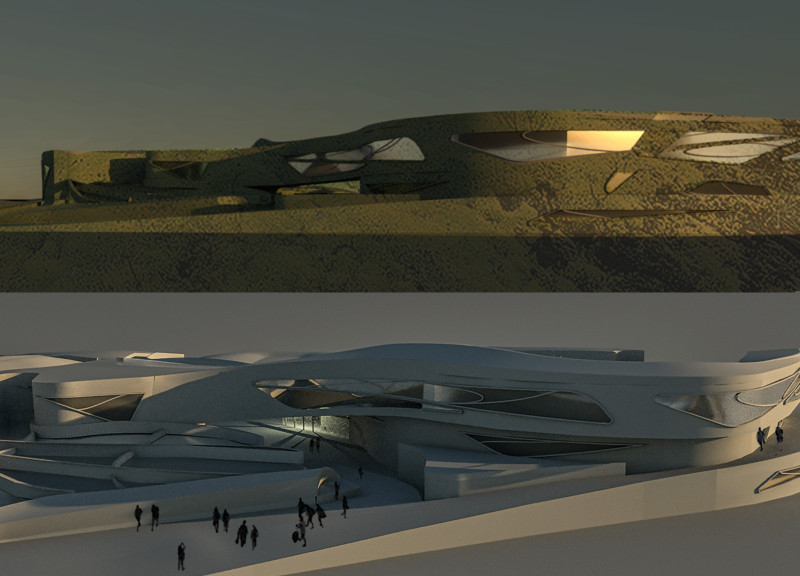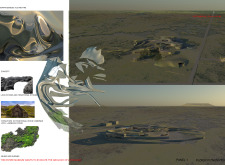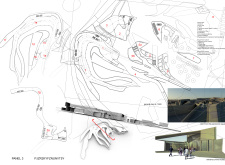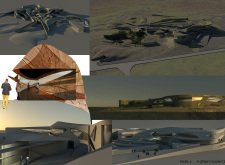5 key facts about this project
The design is centered around the theme of morphogenesis, focusing on the contrast between ice and fire. It is located in an area with significant geological interest and serves primarily as a museum. The overall intention is to link the building with the surrounding volcanic landscape, allowing visitors to engage with both the exhibits and the natural environment.
Architectural Layout
The museum's layout is carefully structured to support visitor interaction. It consists of key areas such as an entrance, a wardrobe, a ticket office, and a video room that is available for free. A central space within the museum enhances social interaction, featuring a room with a fireplace that encourages discussions about art and nature. This thoughtful arrangement fosters a welcoming atmosphere for exploration.
Visitor Experience
On the second floor, a panoramic gallery offers a 360-degree view, enriching the visitor experience by allowing various perspectives of the displayed artworks. This feature promotes dynamic engagement with the exhibits, supporting a deeper understanding of the themes related to geology and art.
Materiality
The design incorporates Lavix stones and traditional stones, reflecting a blend of modern and historical materials. This choice connects the architecture with its geological context while also ensuring durability and visual interest.
Every element of the museum has been designed to invite exploration. The spaces are crafted to create an environment where art and geology come together, encouraging visitors to learn and engage deeply with the surrounding landscape. The architecture itself serves as a bridge between human experience and the natural world.





















































